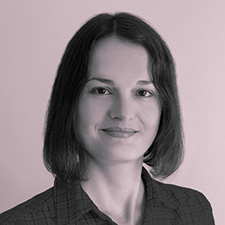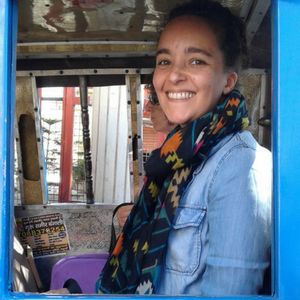Currently dividing her time between Austria and Croatia, Miroslava Sobot is a multidisciplinary graphic designer.
 She has been working on Metta Center projects for the last couple of years, from laying out brochures to designing the cover and interior of Stephanie Van Hook’s Gandhi’s Search for Truth: A Practical Biography for Children. It’s simply too much for one person to both edit and design a 60-page magazine (I know, because I’ve been that said person), so we also brought her on board to take over the layout of Nonviolence magazine (stay tuned for our Winter/Spring 2017 issue—it’s coming soon, and it’s incredible!).
She has been working on Metta Center projects for the last couple of years, from laying out brochures to designing the cover and interior of Stephanie Van Hook’s Gandhi’s Search for Truth: A Practical Biography for Children. It’s simply too much for one person to both edit and design a 60-page magazine (I know, because I’ve been that said person), so we also brought her on board to take over the layout of Nonviolence magazine (stay tuned for our Winter/Spring 2017 issue—it’s coming soon, and it’s incredible!).
Time and again, Miroslava goes far above our requests and expectations. As the creative director and editor of Nonviolence magazine, I’ve worked really closely with her to produce our next issue. She deserves some major kudos: In addition to seamlessly carrying over our original design, she fine-tuned every element, taking each of them to a new level. And on top of that, she contributed a lot of extra design time, without charging us for that additional work.
We recommend her services, which are highly professional and reasonably priced. To learn more about Miroslava’s work, please visit: www.mika-art.com.
What inspired you to become a designer?
Well, it wasn’t actually an inspiration but a tendency to express myself visually since my early childhood. I was constantly full of ideas and creating something—drawing, painting, making collages, modeling clay, building things with LEGOs. In high school, when the time came for me to decide what to study and which university to choose, I tried to picture myself in the future and could only imagine myself doing something creative. So I decided to study design, and it has turned out to be a right choice for me.
Is there anything special we should know about the name you work under, Mika Art?
When my nephew was a little kid, he found it hard to pronounce my name, so he gave me a nickname, Mika. Later, I decided that Mika Art would be a good name to work under.
As you’re based in Europe: What might be some of the joys and/or challenges in working for clients with different cultural backgrounds than your own?
For the last few years, I have been working with clients from all over the world, and it has been a great experience. At the beginning, it was definitely a challenge for me to learn how to communicate effectively with people from different cultures and backgrounds. But I began to realize that there are numberless ways to observe (and comprehend) this world of ours, and numberless ways to live in it. Eventually, I started developing long-lasting work relationships with some really great clients and wonderful individuals.
Your diverse work includes designing materials for campaigns against human trafficking, info booklets for migrant workers and various identity pieces for the arts. Does the design process work differently for social campaigns than it does promo materials for the arts?
In general, the design process is always the same, regardless of the nature of the final product. There are several stages in the process that lead to high quality results: analysis, concept/idea, idea visualization and development, and producing final files for print and/or for web. However, there is much more creative leeway in designing for arts. I sincerely enjoy working with inspiring art material. In designing for social campaigns, it’s necessary to come up with a visually appealing solution that communicates the right message to the target audience. I find it really interesting to solve these kinds of challenges.
If you were to give a few words of visual communications advice to organizations and community groups striving for systemic change, what would they be?
First, think about your mission: what message do you want to send, and who is your target audience? Second, create a sound marketing plan: define how to send your message and how to reach your target audience (websites, campaigns, social media, handouts, ads, magazines, etc). After you have everything defined, hire professionals (copywriter, designer, web or app developer, etc) to help you carry out your plan effectively. It amazes me that organizations can be somewhat reluctant to hire professionals for their campaigns—doing so can be the cornerstone of a successful communications strategy. The knowledge and skills these professionals offer can contribute tremendously to every step of the outreach journey, from the initial planning to a great public reception.








